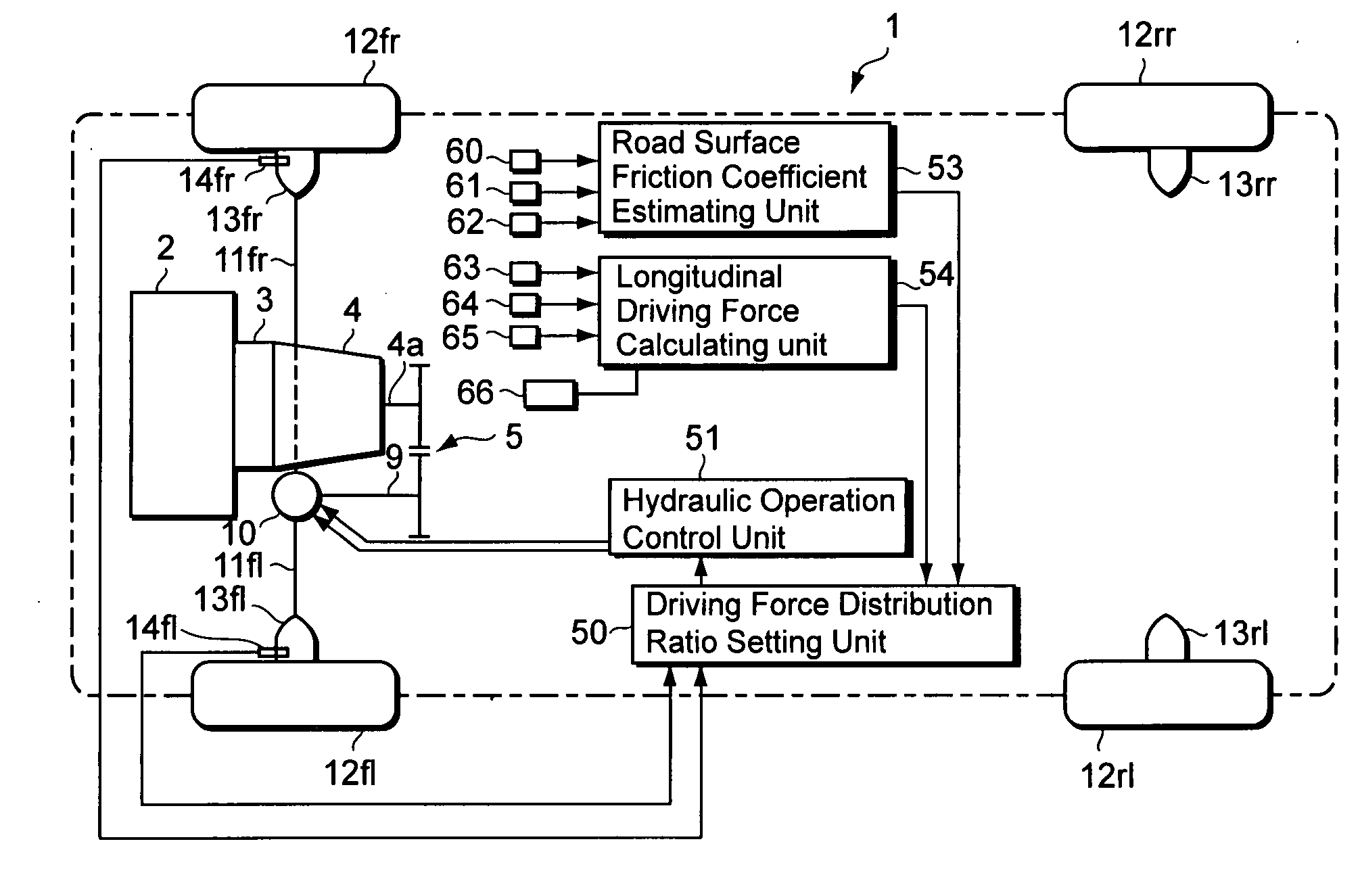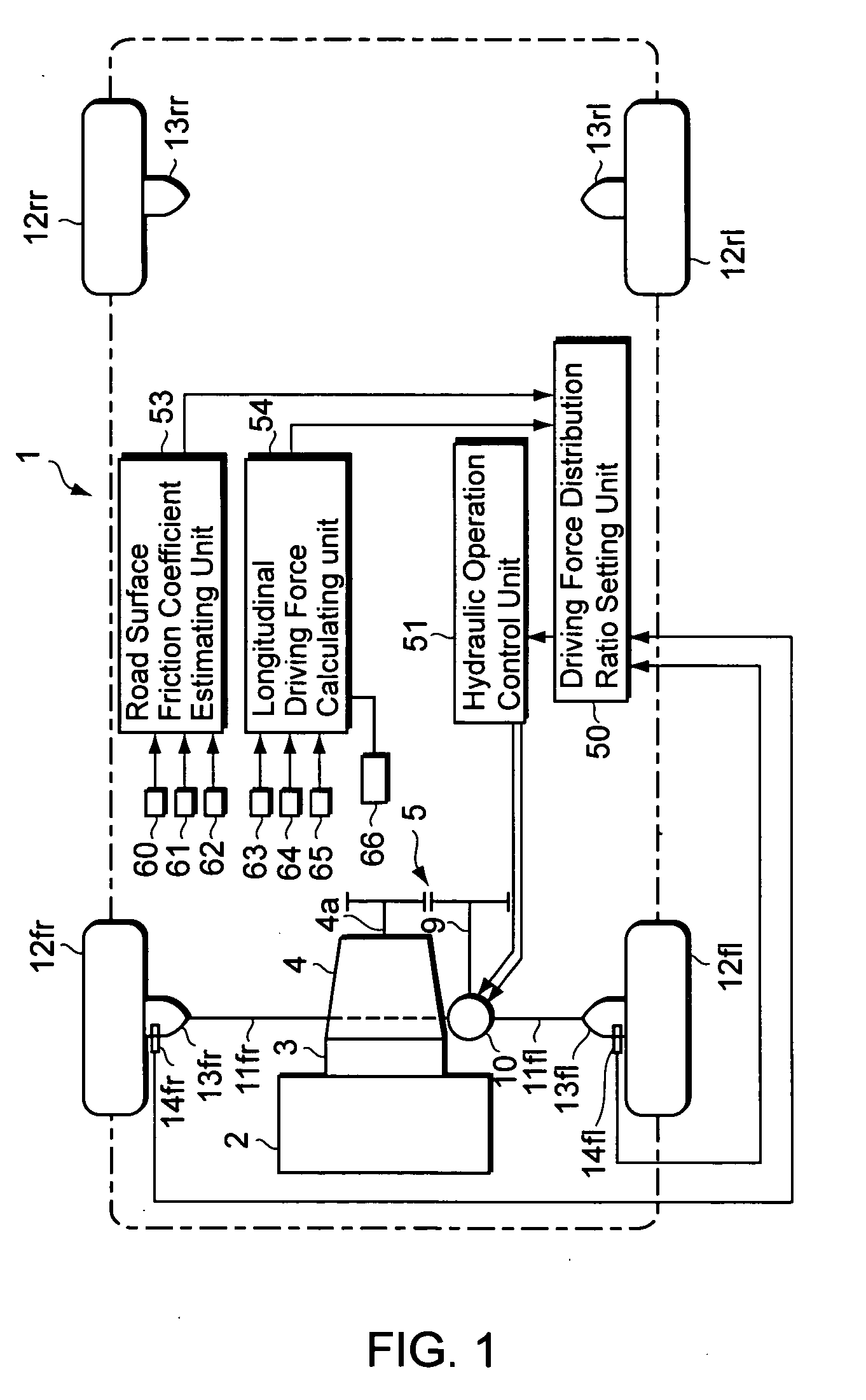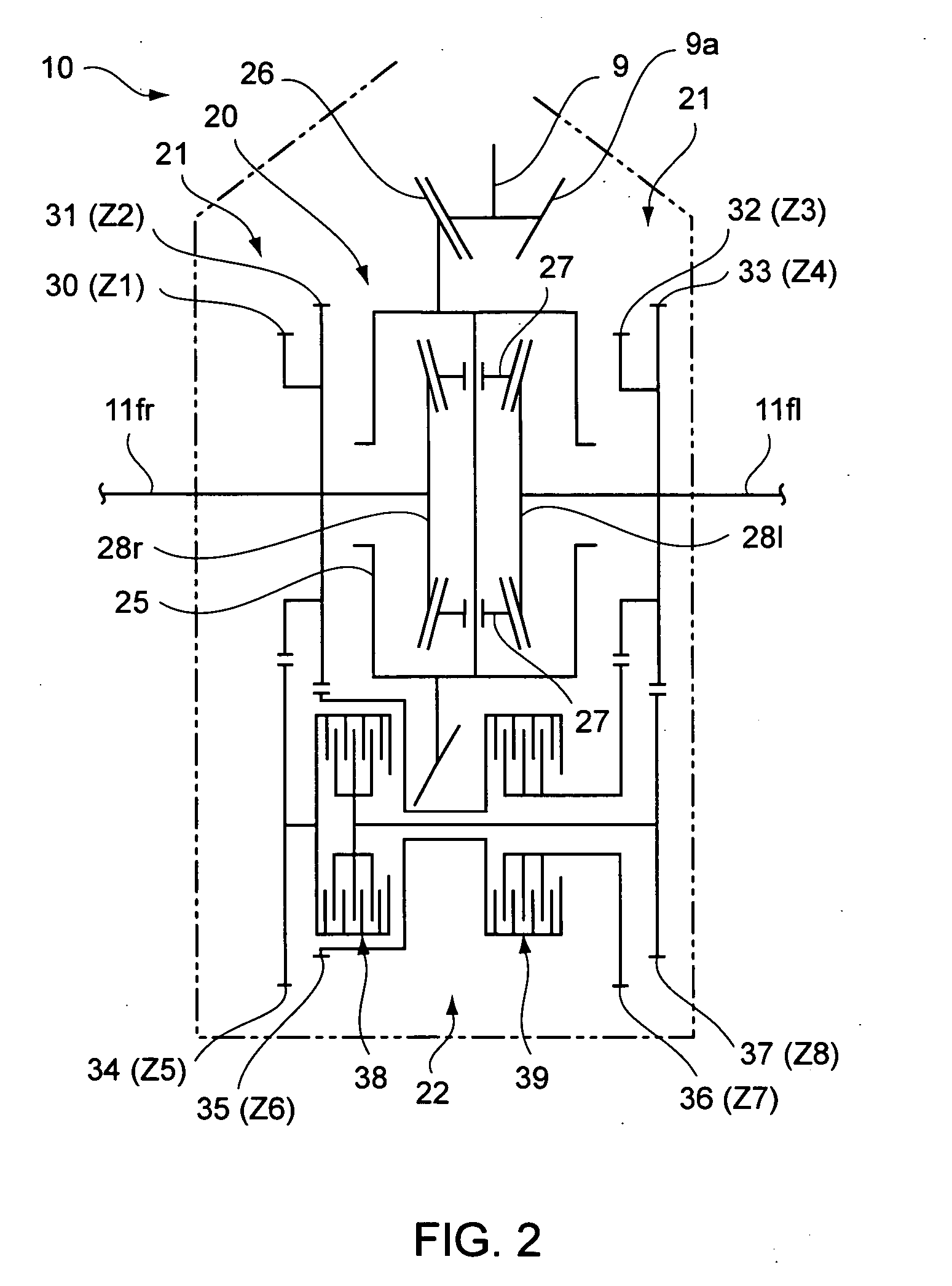Vehicle motion control device and method
a technology of motion control device and vehicle, which is applied in the direction of cycle equipment, instruments, tractors, etc., can solve the problems of steering stability degradation, loss of stability against disturbance, and insufficient consideration of stability and response, so as to achieve superior stability and response, and effectively utilize the effect of tire grip
- Summary
- Abstract
- Description
- Claims
- Application Information
AI Technical Summary
Benefits of technology
Problems solved by technology
Method used
Image
Examples
first embodiment
[0037] A first example of a first embodiment according to the present invention is described below with reference to the accompanying drawings. FIG. 1 is a schematic diagram of a driving force distribution control device, FIG. 2 is a skeleton diagram showing the schematic structure of a front wheel final velocity reduction device, FIG. 3 is an explanatory diagram showing an equivalent two-wheel vehicle model for a 4-wheel vehicle, and FIG. 4 is an explanatory diagram showing the equations of motion functionally based on the vehicle motion model.
[0038] In FIG. 1, the reference numeral 1 indicates a vehicle such as an automobile. In the present embodiment, the vehicle 1 is a front wheel drive automobile, where a driving force generated by an engine 2 is transmitted through a torque converter 3 and a transmission 4 to a transmission output axle 4a. The driving force transmitted to the transmission output axle 4a is further transmitted through a reduction gear array 5 to a drive axle (...
second embodiment
[0083] Prior to describing the system structure and system processes regarding the vehicle motion control device according to a second embodiment, first the system matrix in the equations of state is explained below in order to define the control concept. Note that the braking force can be viewed as the reverse-direction component (the negative component) of the driving force, and thus the “driving force” in the present embodiment is defined to include the braking force.
[0084]FIG. 7 is an explanatory diagram of a vehicle model. The vehicle model shown in this figure is a two-wheel model to represent the state of motion of the vehicle in terms of a front wheel and a rear wheel. In this vehicle model, the state of motion of the vehicle is expressed in terms of the rotational motion (the yaw motion) around the vertical axis (the Z axis), and the translational motion in the lateral direction (the Y axis). When the front wheel is steered (and the rear wheel is parallel to the X axis), t...
third embodiment
[0116] In the second embodiment, the values of the nonlinear term were calculated while varying the driving force distribution ratio r from 0.00 to 1.00 in a stepwise manner in Eq. (44) to thereby determine the target value r* which is the driving force distribution ratio r that yields the smallest of the calculated nonlinear term values. However, in Eq. (44) there are some cases wherein the value in the square root becomes negative, so that it is not possible to obtain the driving force distribution ratio r. Therefore, in actual control, it is preferable to determine the driving force distribution ratio r using the following expression: kf·Ff—yμ2·Ff—z2-(Ff—Lim-r2·Ff—div)2+kr·Fr—yμ2·Fr—z2-(Ff—Lim-1-r2·Fr—div)2(45)
where Ff_Lim is a per-wheel maximum value of the driving force applied to the front wheels 76f (hereinafter termed “front wheel maximum value”), which is the product of the friction coefficient μ and the per-wheel vertical force Ff_z for the front wheels 76f; and...
PUM
 Login to View More
Login to View More Abstract
Description
Claims
Application Information
 Login to View More
Login to View More - R&D
- Intellectual Property
- Life Sciences
- Materials
- Tech Scout
- Unparalleled Data Quality
- Higher Quality Content
- 60% Fewer Hallucinations
Browse by: Latest US Patents, China's latest patents, Technical Efficacy Thesaurus, Application Domain, Technology Topic, Popular Technical Reports.
© 2025 PatSnap. All rights reserved.Legal|Privacy policy|Modern Slavery Act Transparency Statement|Sitemap|About US| Contact US: help@patsnap.com



